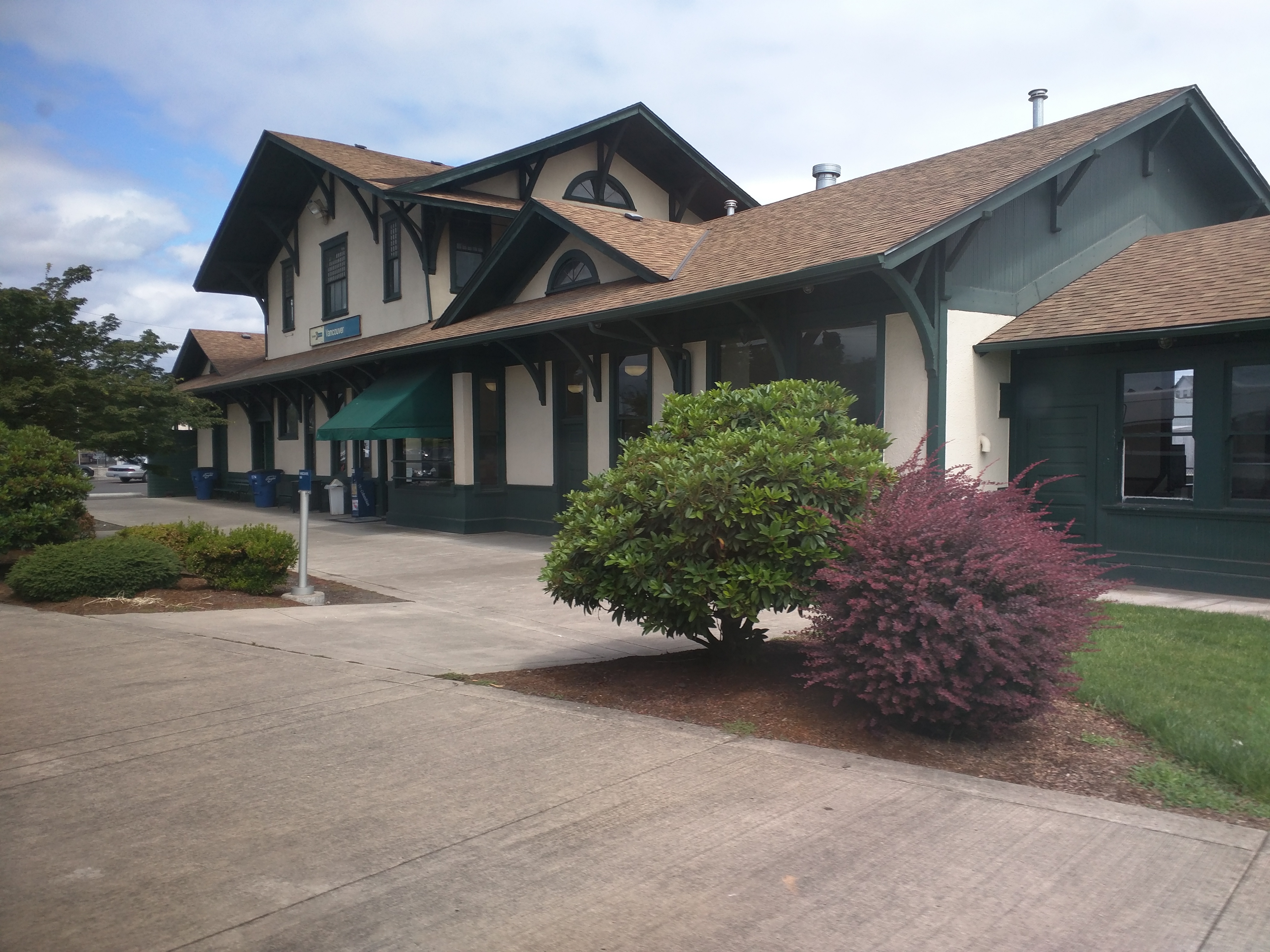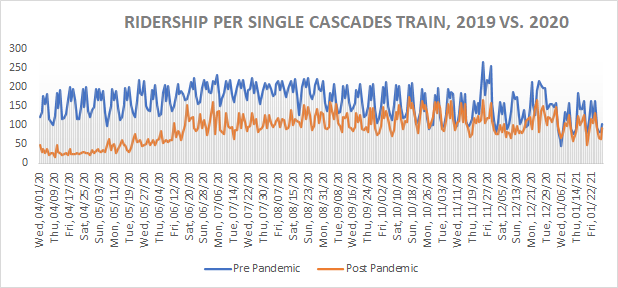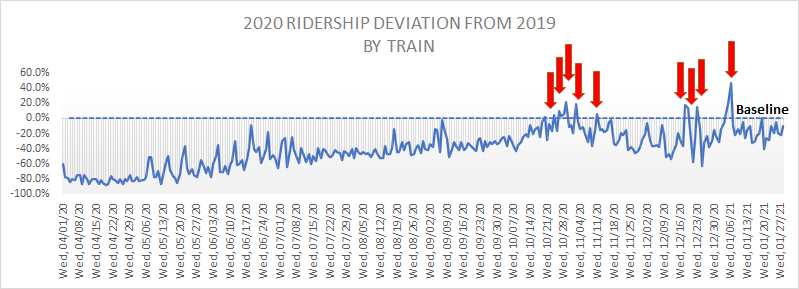February 18, 2021
Ridership on Amtrak Cascades Returning to Pre-Pandemic Levels
Train-for-train, ridership on the Cascades is returning to normal - but when will service resume?
The Washington Department of Transportation (WSDOT) has made it very easy to assess how various transportation modes are being affected by the ongoing COVID-19 Pandemic. WSDOT has provided infographics so Washingtonians can understand how our local transit systems, ferries, and intercity rail programs are performing in the present day, and a year previous - post-pandemic and pre-pandemic respectively - providing a convenient comparison between the two.
Viewing the section regarding our Amtrak Cascades Intercity Passenger Rail program, one will see a graph like this (the screenshot below was accessed on 2/01/21):
At first glance, the viewer is confronted with the incredible overall decline in patronage; the service today sees perhaps 10% of the patronage it saw pre-pandemic. Our rail corridor appears to have fallen from boasting one of the highest ridership counts in the country to a shadow of its former self. Or has it?
What WSDOT reporting does not account for is that Amtrak Cascades service today looks very different from what it looked like one year ago in a fundamentally important way: there is far less of it. 2019, when the Cascades achieved its greatest ridership figure in a decade, it consisted of seven round trips operating on different parts of the corridor between Vancouver, B.C. and Eugene, OR (14 daily trains). Today, there is but one round trip between Seattle and Portland, or just 2 daily trains serving fewer cities.
The data posted by WSDOT is presented in a downloadable format, allowing us to use the data for further analysis. What if we look at pre-pandemic ridership versus post-pandemic ridership, and adjust it by train? Taking the 2019 ridership figure, and dividing it by 14 (trains), while dividing the 2020 ridership by 2 (trains), gives us a profile of the average ridership of a single Cascades train, pre and post-pandemic:
From this, one can see that while there was a genuine disparity between an average Cascades train at the start of the pandemic in April of 2020, Amtrak Cascades ridership has been steadily recovering ever since. This is remarkable because our 2 Cascades trains are presently operating at 50% pandemic-imposed capacity - a fact that these numbers do not reflect.
A more granular way to look at the difference between a single pre-pandemic Amtrak Cascades train, and a single post-pandemic Amtrak Cascades train is to assess the difference in ridership between the two. Here, too, the trend of ridership returning is clear, as the difference between pre-pandemic trains and post-pandemic trains is steadily narrowing. Note the few spikes into the positive (as highlighted by red arrows) - these indicate days in which an average Amtrak Cascades train in 2020 actually carried more people than an average Amtrak Cascades train in pre-pandemic 2019 did! The more recent large negative differences were most likely due to the holiday season, and the fact that pre-pandemic trains did not have to cap their capacity at 50% due to pandemic distancing requirements. Here again, certain outliers aside, we see a strong trend pointing towards an Amtrak Cascades train in post-pandemic 2021 performing similarly to its pre-pandemic counterparts.
To summarize, presently the state is operating 2 daily trains, as opposed to 14 daily trains as it did one year ago. By running only 14% of the service with a 50% capacity cap, it should surprise nobody that only about 10% of ridership has been retained.
What must be taken away from this exercise is that Cascades ridership has in fact experienced a return. Our two post-pandemic trains are starting to perform like two pre-pandemic trains. It follows that ridership will not return to significantly higher levels until service is returned to former levels - former service being 14 trains a day or more given the reopening of the Point Defiance bypass.
It is not clear whether the two Cascades trains presently operating will be required to outperform the average performance of their pre-pandemic peers. Restarting train frequencies is a more complicated endeavor than restarting a bus service. The willingness of BNSF to allow service to revamp and the availability of necessary equipment to support 14+ daily Cascades trains remain items for further discussion.



